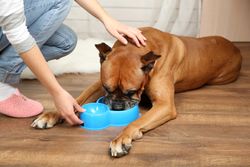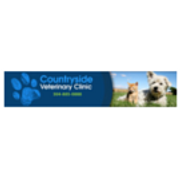What Are the Best Ways to Help an Animal Heal After Pet Surgery?

Pet surgery can help improve your companion’s health—and even save their life. But while these procedures can make things better, it does take time for animals to heal and get back to their normal selves. Here at Countryside Veterinary Clinic in Charles Town, WV, we encourage pet parents to follow an assortment of tips to help promote complete and rapid recovery. If you’re prepping for your furry friend’s upcoming procedure, we’ll highlight some of the most important strategies to support an animal’s healing process.
How to Help Your Dog or Cat Recuperate From a Surgical Procedure
Create a Home for Healing
Arrange a secure area where the animal can rest without excitement. For example, if you have other animals or young children, keep them away from the space. Dogs and cats may try to move around once the anesthesia starts to wear off, but they might have trouble with coordination or risk tearing stitches if an activity is too strenuous. To avoid problems, keep your pet’s bed at ground level so they don’t try to climb up the stairs or jump on a couch. It’s not unusual for it to take up to 48 hours for anesthesia to wear off completely, so if your dog still seems groggy the next day, don’t panic!
Opt for No-Frills Nourishment
 As much as your pet may be craving a special treat, post-surgery nausea and vomiting are common experiences. Instead, stick to a simple diet—we have plenty of suggestions! We also recommend feeding only a quarter of their normal amount of food the first night after the surgery in order to be gentle to an upset stomach. Additionally, keep the water dish fresh and full at all times to ensure your dog or cat is properly hydrated. If we prescribed any medications, follow directions precisely to help keep pain at bay and prevent complications.
As much as your pet may be craving a special treat, post-surgery nausea and vomiting are common experiences. Instead, stick to a simple diet—we have plenty of suggestions! We also recommend feeding only a quarter of their normal amount of food the first night after the surgery in order to be gentle to an upset stomach. Additionally, keep the water dish fresh and full at all times to ensure your dog or cat is properly hydrated. If we prescribed any medications, follow directions precisely to help keep pain at bay and prevent complications.
Keep a Close Watch
Despite their best efforts to be independent, animals need your careful assistance after pet surgery. To accommodate increased urination needs, carefully walk your dog outside on a leash or move your cat to the litter box every few hours. Also, adjust the climate or provide blankets to prevent your pet from getting too hot or cold, as it’s difficult for animals to regulate body temperatures after a procedure. You can check your pet’s temperature at home rectally using a regular thermometer. Normal temperatures range from 100 to 102.5 degrees. (Be sure to clean the thermometer thoroughly afterwards. We do not recommend that you use it for humans after this.)
Avoid Wound Worries
The plastic cone provided to pets after surgery will prevent them from chewing their stitches, but it’s still critical to monitor the surgical site for tearing, irritation, or infection. We also use stainless steel sutures to discourage licking. Typically, you’ll need to make sure the wound remains dry to help speed up healing. However, Dr. Dibbern may provide additional instructions for cleaning or medicating the site.
We know that preparing for pet surgery can be an anxiety-inducing experience, but it’s not something you have to endure alone. Dr. Dibbern and his medical team are here to help every step of the way to ensure your furry companion is treated to the best care before, during, and after the procedure. Visit us online to learn more about our approach to surgical care or the other services we offer at Countryside Veterinary Clinic. To schedule an appointment, call (304) 725-7663 to reach a friendly team member at our office in Charles Town, WV, today.
About the Business
Have a question? Ask the experts!
Send your question

